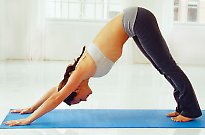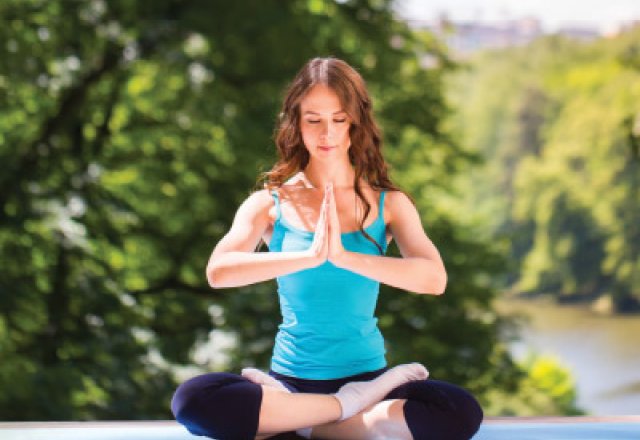
Detoxing through yoga

Find your inner peace.
As well as detoxing your yoga practice, yoga can also help you detox your mind and body. This is by following three elements of yoga practice: specific poses (asanas), breathing (pranayama) and dietary and lifestyle tips (Ayurveda) that focus on detoxing the physical body as well as the mental state.
ASANA
BKS Iyengar (1918–2014) said that twisting asanas are physically detoxifying due to their ‘squeeze and soak’ action on the circulatory, digestive and lymphatic systems as they fire up the metabolism, create heat, stimulate the abdominal regions and torso but allow us to release mental tension through awareness. Some go-to poses are wide-legged forward fold (Prasarita Padottanasana), revolved chair (Parivrtta Utkatasana), seated spinal twist (Ardha Matsyendrasana), and reclining twist (Jathara Parivartanasana). Just pick out the poses you ‘feel’ your body needs and you’re on your way to feeling like a new you, but remember, work to your capability level.
PRANAYAMA
Pranayama is yogic breathing. So when it comes to the breath and detoxing, you need something more kick-butt than those regular 12 to 20 breaths per minute you breeze through every day; you need to look at a focused, cleansing pranayama. A beneficial yet safe yoga breathing exercise to incorporate is the three-part breath or Ujjayi Pranayama, best practised in Savasana (corpse pose) or Sukhasana (easy cross-legged posed). First, you inhale deeply – filling the belly, ribs and upper chest with your breath – then, as you exhale, release from the upper chest, ribs and belly. Try this for five to 10 rounds, increasing the length of the inhalation and exhalation as you work through the practice. Ujjayi breathing allows us to connect our body and mind by serving as a bridge between the outward practices of yoga – asanas and pranayama – and the inward practices, such as meditation. In terms of detoxing the body, Ujjayi breathing increases the body’s oxygen levels and lung capacity during the inhalation as well as releasing toxins through the exhalation. Ujjayi breathing is generally safe for most people, but please return to normal breathing if you feel even slightly light headed or dizzy. There are some more powerful detoxing breathing (pranayama) techniques but these should only be practised under the strict guidance of an experienced, qualified yoga teacher – so don’t be afraid to ask.
AYURVEDA
One of the world’s oldest holistic healing systems from India is based on the belief that health and wellness depends on a delicate balance between the mind, body and spirit. The primary focus of Ayurvedic medicine is to reduce your risk of illness and promote good health by working with three key elemental life forces or types called doshas – vata, pitta and kapha. Each dosha controls a different body function, and Ayurveda believes that your chances of illness are linked to your dosha ‘balance’. Balancing your dosha is generally practised with a highly trained, experienced yoga teacher or therapist who will balance your individual dosha through various foods, lifestyle changes, asanas and pranayama. You can find out what your dominant dosha is at The Chopra Center (chopra.com) or find your local yoga therapist through Yoga Therapy Australia.


